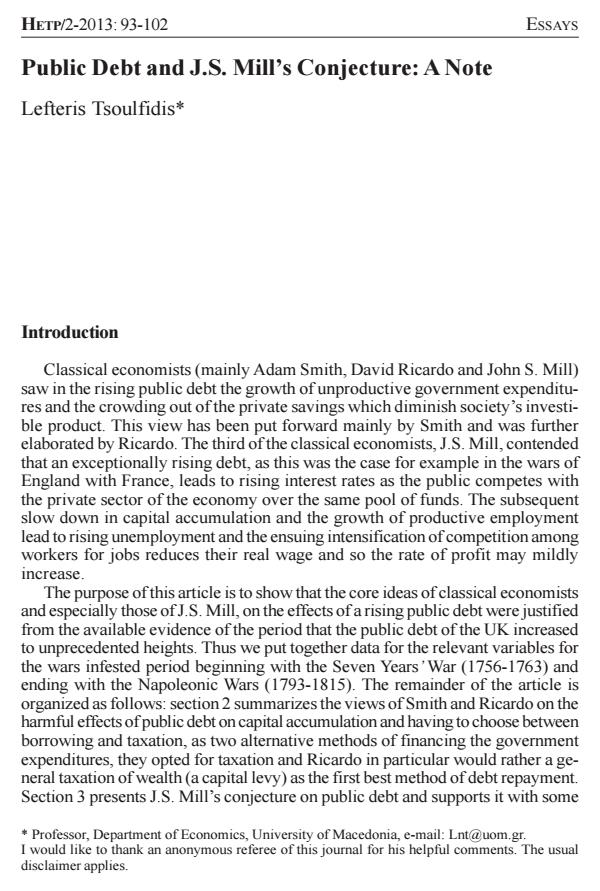Public Debt and J.S. Mill’s Conjecture: A Note
Journal title HISTORY OF ECONOMIC THOUGHT AND POLICY
Author/s Lefteris Tsoulfidis
Publishing Year 2013 Issue 2013/2
Language English Pages 10 P. 93-102 File size 64 KB
DOI 10.3280/SPE2013-002005
DOI is like a bar code for intellectual property: to have more infomation
click here
Below, you can see the article first page
If you want to buy this article in PDF format, you can do it, following the instructions to buy download credits

FrancoAngeli is member of Publishers International Linking Association, Inc (PILA), a not-for-profit association which run the CrossRef service enabling links to and from online scholarly content.
Classical economists - mainly Smith, Ricardo and J.S. Mill - abhorred public debts because of their interference with capital accumulation. J.S. Mill in particular envisaged that a rising public debt leads to higher interest rates and falling real wages, a combination which may be consistent with a mildly increasing trend in the profit rate.
Keywords: Classical Economists, Public Debt, J.S. Mill, Ricardian Equivalence
Jel codes: B12, B13, B14, B16, H50
- Ricardo’s Labor Theory of Value Is Alive And Well in Contemporary Capitalism Lefteris Tsoulfidis, in World Review of Political Economy /2021
DOI: 10.13169/worlrevipoliecon.12.4.0493 - The History of the Political Economy of Public Debt Nicholas J. Theocarakis, in SSRN Electronic Journal /2014
DOI: 10.2139/ssrn.2535293 - Competing Schools of Economic Thought Lefteris Tsoulfidis, pp.77 (ISBN:978-3-031-58579-1)
- Competing Schools of Economic Thought Lefteris Tsoulfidis, pp.365 (ISBN:978-3-031-58579-1)
Lefteris Tsoulfidis, Public Debt and J.S. Mill’s Conjecture: A Note in "HISTORY OF ECONOMIC THOUGHT AND POLICY" 2/2013, pp 93-102, DOI: 10.3280/SPE2013-002005